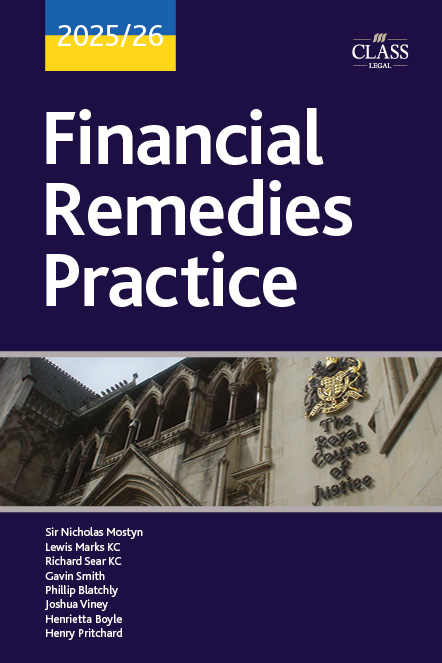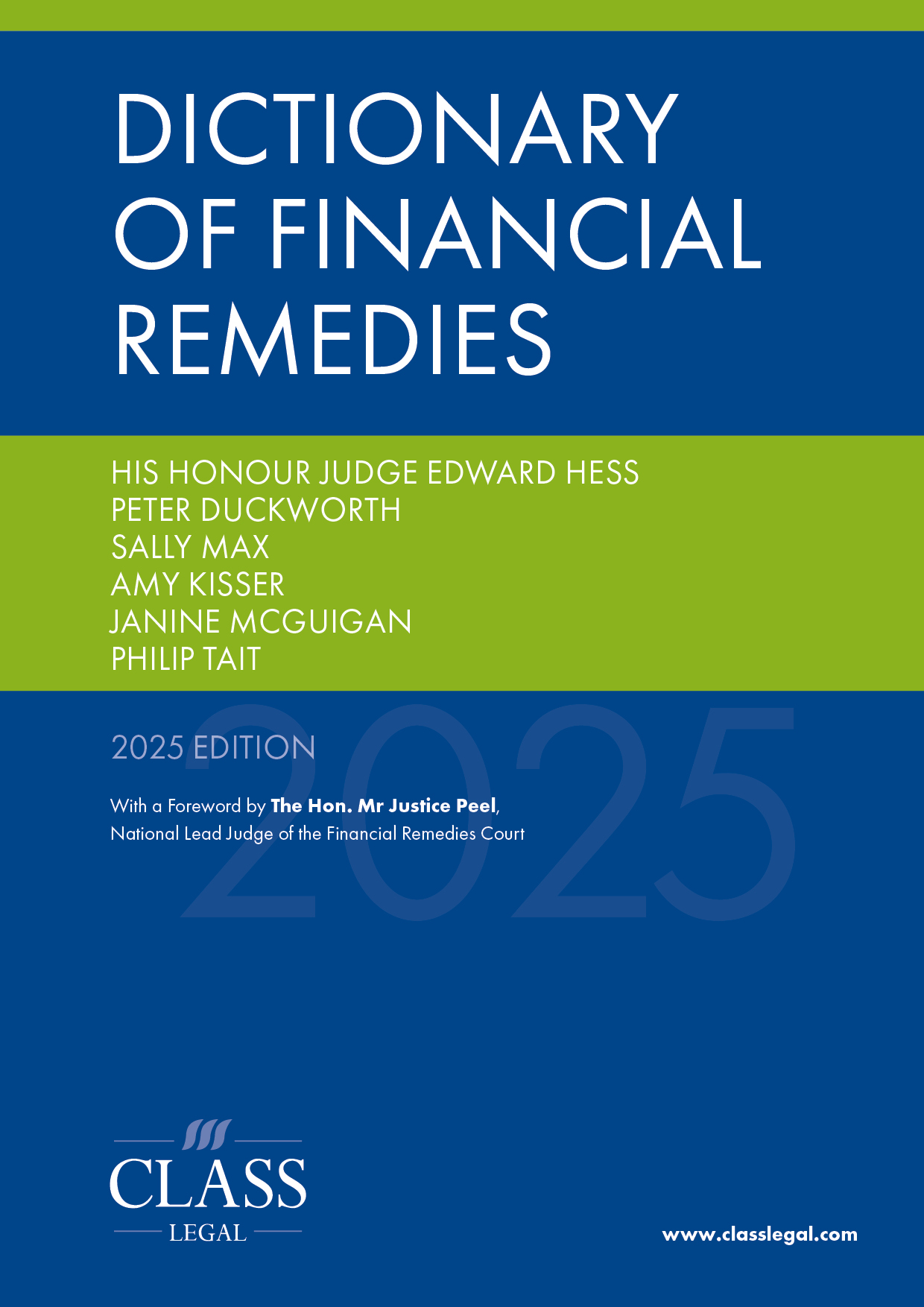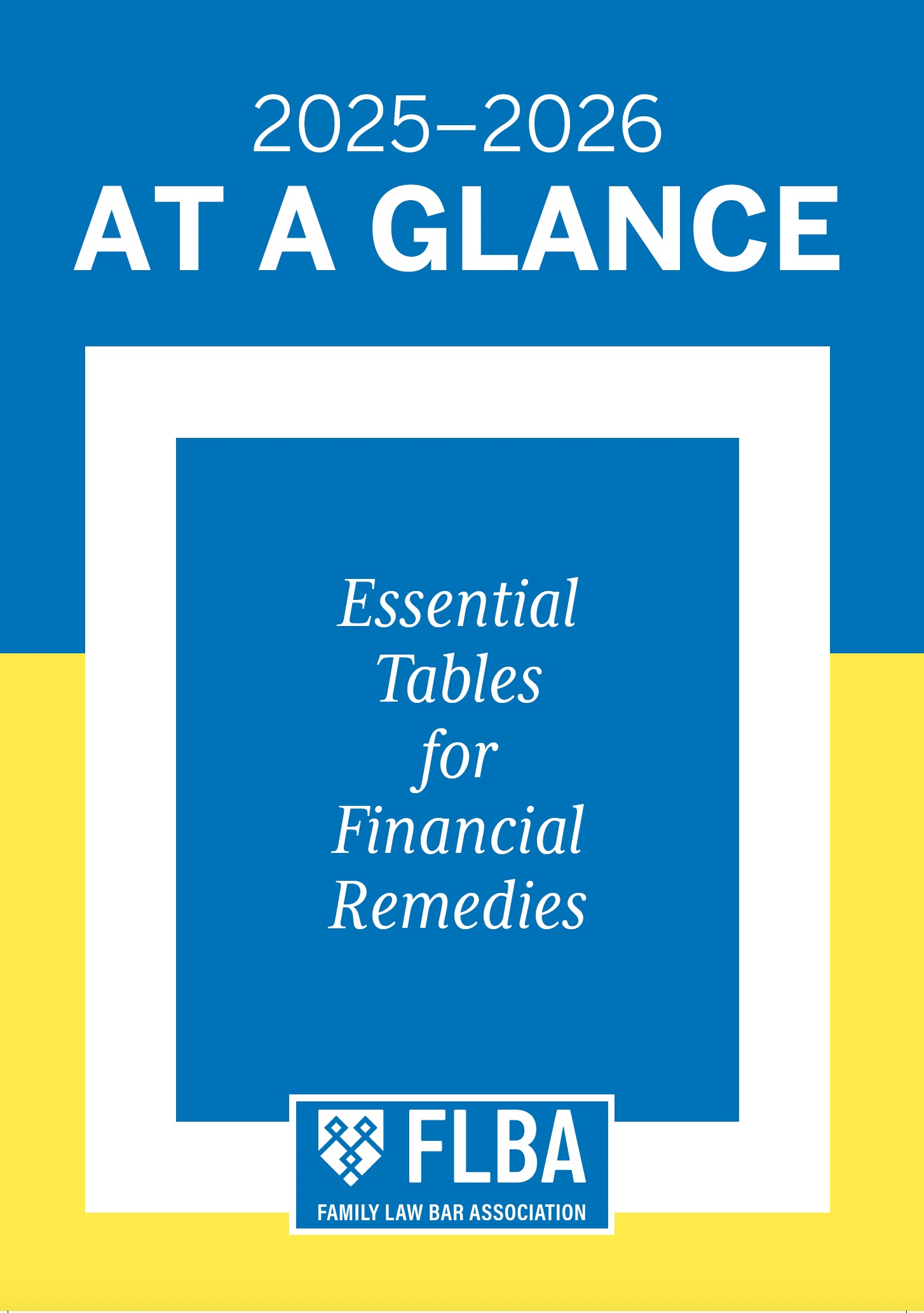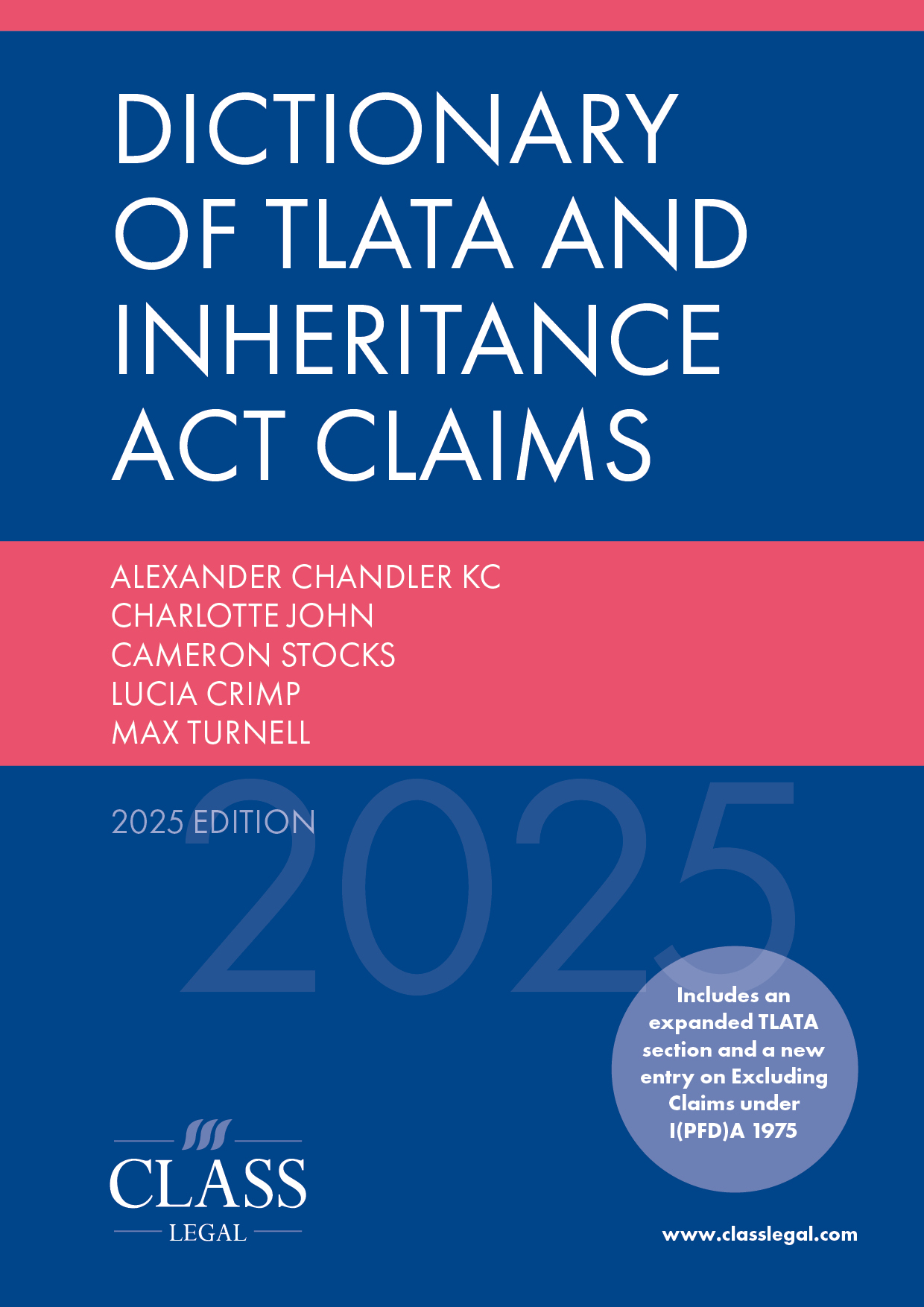
Kathryn Elizabeth Norman v Michael Ian Norman [2025] EWFC 107 (B)17 April 2025
Published: 26/04/2025 22:00
https://caselaw.nationalarchives.gov.uk/ewfc/b/2025/107
District Judge Veal. Alleged material non-disclosure, W’s totally without merit application issued in October 2024 after seven rounds of litigation including W’s D50K application, settled by agreement, made when she knew about H’s alleged non-disclosure. W ordered to pay costs on indemnity basis. Warning given regarding the use of websites leading to jigsaw identification and thereby breaching FPR 9.46(3).
Background
Long marriage, two children (22/16). Consent order dated 09 January 2023, agreed at FDR, approved by the court on 31 January 2023 (Consent Order). W applied to set aside the Consent Order based on alleged material non-disclosure by H of (i) inheritance received after the FDR, and (ii) discretionary trusts which H was a beneficiary of, and that had paid distributions to H after the FDR. W knew that the children were beneficiaries of the trusts in issue. W said she did not know H was a beneficiary.
At the FDR on 9 January 2023 the parties reached an agreement; the net effect of Consent Order (ignoring the pensions) gave W £503,862 (63%) and H £290,076 (37%). H had the greater earning capacity, he was to retain all his income. W was to be housed mortgage-free in the FMH that was transferred to her.
After the FDR H made an offer on a property that was accepted, and he began the purchase process. In April 2023, H’s parents transferred to him £150,000 mortgage advance. In October 2023, H received £275,000 from the trusts in question, after the sale of a trust property was completed.
The applicant issued an application in December 2023 which was dismissed on the papers on 19 December 2023. The judge determined it was an enforcement application made in the wrong way.
On 3 January 2024, W issued a D50K application (notice of application for enforcement by such method of enforcement as the court may consider appropriate). In March 2024, the D50K application was settled, and the signed Consent Order was approved on 14 March 2024.
The applicant accepted that in March 2024 she was preparing to apply to set aside the Consent Order and was aware of the non-disclosure point she relied on.
On 22 October 2024, W issued her application to set aside the Consent Order.
W also has a separate and ongoing civil claim regarding the parties’ chattels.
Summary of the law
DJ Veal sets out the legal framework of disclosure and set aside at [9]–[24], reminding himself:
- That there is a duty of full and frank disclosure from Form E until conclusion, that duty continues until judgment, and it is suggested that the duty continues until the final order is sealed; On v On [2024] EWFC 379; see [9].
- The duty arises for whichever party has the disclosable information, and whether it assists their case or not; [11].
- Not all non-disclosure leads to set aside, the non-disclosure would have had to make a substantial difference to the order made; [11].
- Whether the non-disclosure or misrepresentation was accidental, innocent or negligent, it will be necessary to show that the omission or distortion is material to the final order that would otherwise have been made; [12].
- The burden is on the applicant to prove the non-disclosure is material; [13].
- FPR 9.9A(4) is clear that the Part 18 procedure applies to non-disclosure; [17].
- Any application must be made promptly; Goddard-Watts, Kingdon v Kingdon [2011] 1 FLR 1409, BT v CU [2021] EWFC 87 and A v B [2016] EWHC 10.
The judge considered whether a failure to apply to set aside promptly could give rise to the power to strike out pursuant to FPR 4.4(1)(c), but did not determine the point. He did note that the principles arising from applications for relief from sanctions under FPR 4.6 and Denton v TH White Limited [2014] EWCA Civ 906 would, in that context, likely be engaged.
When considering the issue of costs, the judge identified that in a set aside application costs were governed by FPR 28.2, costs did not automatically follow the event, and the factors in CPR 44.2 had to be considered; [170]–[175]. The merit of an application is relevant to the issue of indemnity costs; where the judge had certified the W’s application as totally without merit, it was indicative that she had done more than not won. Regarding indemnity costs, Three Rivers District Council v The Governor and Company of the Bank of England [2006] EWHC 816 (Comm) put it very neatly: ‘where a claim is speculative, weak, opportunistic or thin, a claimant who chooses to pursue it is taking a high risk and can expect to pay indemnity costs’; [183].
When considering publication of the judgment the judge identified that the presumption was in favour of open justice and publication; [199]. The court had to weigh up competing human rights, Article 8, Article 10 and the competing rights of others, e.g. W and H’s competing rights, and the competing rights of the children.
Held/Findings
Application
On the facts of this case the duty of full and frank disclosure ended when the final order by consent was signed, January 2023, and H did not know about the advance inheritance at that time; [9] and [117].
The duty of full and frank disclosure arises for whichever party has the disclosable information, and whether it assists their case or not; [11].
W had failed to prove that H had failed to disclose the advance inheritance from his parents by the end of January 2023. The judge was not satisfied that H knew he would be getting it. The application was speculative, and the applicant lied about when she knew that the respondent’s parents had given him the advance inheritance to improve her prospects of success. Even if the judge were to ignore W’s dishonesty, the judge was not satisfied that W ever had a real prospect of successfully proving the non-disclosure in respect of the advance inheritance issue.
The application based on advance inheritance was not brought promptly; [118]–[119]. The delay of some 20 months (on W’s evidence) or 14 months (on the finding) is a serious breach of paragraph 4.6 of PD 18A; [122].
The application based on fraudulently withholding details of potential trust distributions was fanciful and the W was picking and choosing what she knew when, and what was true; [126]. The judge concluded the non-disclosure by H of his beneficial interest in the St Ives Trusts before the Consent Order was made was innocent. W had not proved that H knew about it himself; [145].
The existence of the trusts would not have made a material difference to the Consent Order in any event. The trusts were not matrimonial assets, this was a needs case, and the matrimonial assets were divided to meet the parties’ needs at the time; [147]–[148]. W received the greater share of the matrimonial assets, notwithstanding that she accepted H had primary care of the minor child; [150]. The trusts were non matrimonial assets, and the judge was not satisfied that it was known at the time of the Consent Order that H’s parents would have made a distribution to H: the trust was discretionary, and it still held the property at the time; [149].
In any event the delay, as per [118]–[119], [122], would have been grounds for strike out.
Keeping an application up your sleeve
Just because a matter could have been raised in earlier proceedings, the fact that it was not does not necessarily render the failure an abuse of process. The court must apply a broad, merits based, approach. It will rarely find that the later action is an abuse of process unless it involves unjust harassment or oppression of the respondent; Henderson v Henderson (1843) 3 Hare 100, summarised in Aldi Stores Limited v WSP Group plc [2008] 1 WLR 748, [157].
An applicant who keeps a second claim up their sleeve while prosecuting the first is at high risk of being found to have abused the court’s process. The proper course is to raise the possibility of the second claim with the court so that appropriate case management directions can be given: see also Stuart v Goldberg Linde [2008] EWCA Civ 2, [158].
DJ Veal was satisfied that the applicant should have raised the possibility of this application and did not do so, and she had not provided any reasonable explanation for her approach.
Costs
The ‘clean sheet’ rule in FPR 28.2 applies.
The CPR 44.2 factors were considered and the judge found that the applicant in this case both pursued a speculative application, and she had the knowledge that it was speculative before she pursued it. The judge described W in the following terms; her case had shifted, and she has been disingenuous, misleading or dishonest in the way in which she pursued her speculative application. Indemnity costs were ordered.
Publication
The parties accepted that the judgment should be published, and the children’s names anonymised. DJ Veal determined that it was proportionate to place greater weight on the principles of open justice, and to anonymise the names of the children but not the parties themselves; [206].
The judge warned all who read his judgment to take note that using forums including those like ‘just answer’ to seek help can lead to breach of FPR 9.46 due to jigsaw identification; [192]–[195] at [195]:
‘The point is made in this judgment so that others reading it are reminded of the existence of the rule, and the need to exercise a healthy dose of caution when posting on the internet or in communicating about issues being considered in family proceedings in any other public forum.’
Outcome
- W’s application dismissed.
- The judge certified W’s application as ‘totally without merit’ – meaning that H is one step closer to being able to obtain a limited civil restraint order under FPR 4.4.
- W to pay H’s costs on the indemnity basis.
- Judgment to be published with names, save for the children who would be anonymised; [206].
- Permission given to disclose the judgment into the chattels claim; [207].









